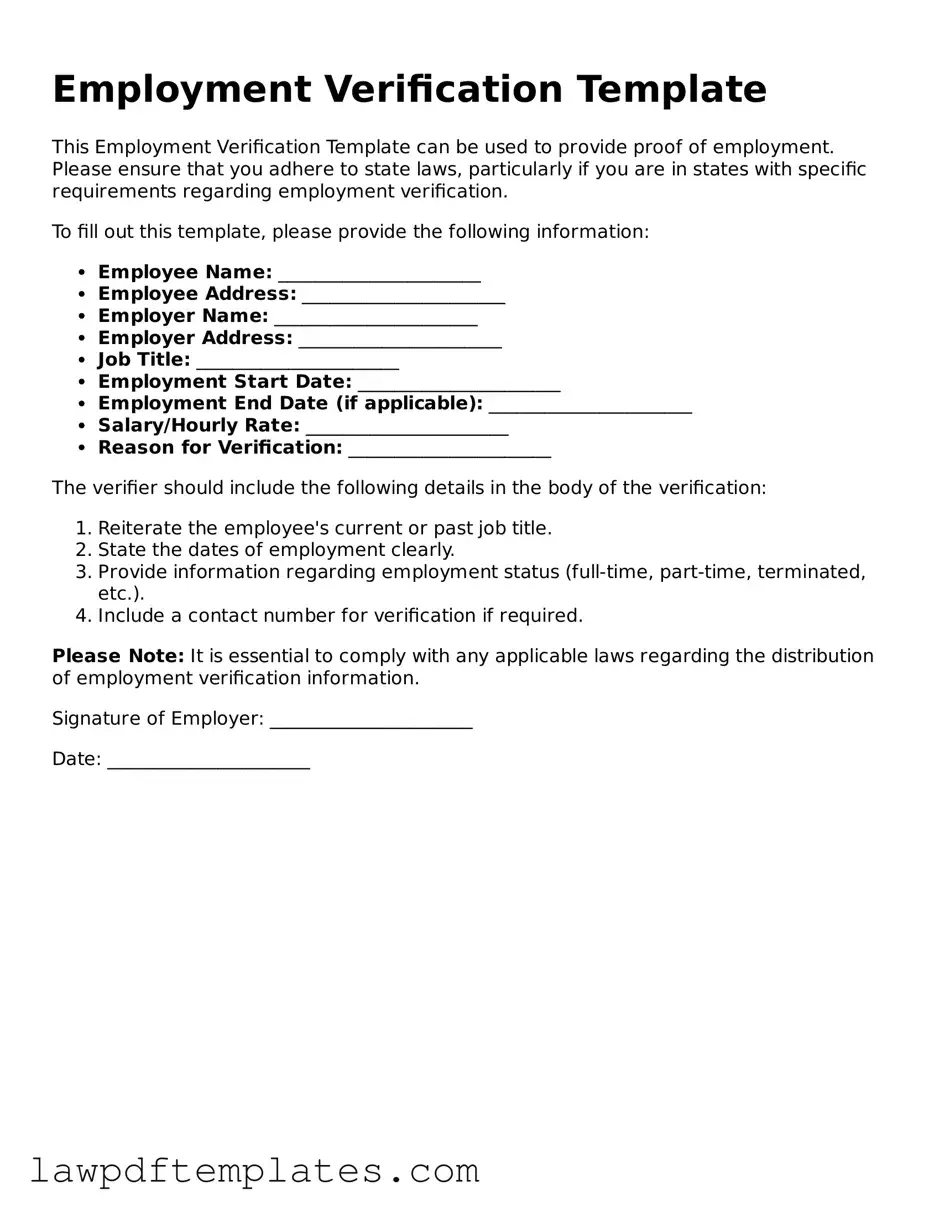When filling out an Employment Verification form, many individuals make common mistakes that can lead to delays or complications in the verification process. One frequent error is providing inaccurate or incomplete information about job titles. It’s essential to ensure that the title accurately reflects the position held, as discrepancies can raise questions about employment history.
Another mistake is failing to include specific dates of employment. Employers often require precise start and end dates to verify tenure. Omitting this information or providing vague dates can hinder the verification process and may lead to further inquiries.
People also sometimes overlook the importance of including contact information for a supervisor or human resources representative. Without this critical detail, the verification process may stall, as the verifier may struggle to reach someone who can confirm employment details.
Additionally, some individuals mistakenly assume that their previous employer will automatically remember their employment details. This assumption can lead to frustration if the employer no longer has accurate records or if the person responsible for verification is unavailable.
Providing inconsistent information across different forms can create confusion. For instance, if a person lists one job title on the Employment Verification form and a different one on a job application, it raises red flags. Consistency is key to a smooth verification process.
Another common error is neglecting to sign or date the form. A signature is often required to authorize the release of employment information. Without it, the form may be considered invalid, resulting in delays.
Some individuals fail to read the instructions carefully. Each Employment Verification form may have specific requirements or sections that need to be filled out in a particular way. Ignoring these guidelines can lead to incomplete submissions.
Lastly, many people forget to double-check their spelling and grammar. Simple mistakes can detract from the professionalism of the submission. Clear, accurate, and polished information helps ensure that the verification process goes smoothly.
